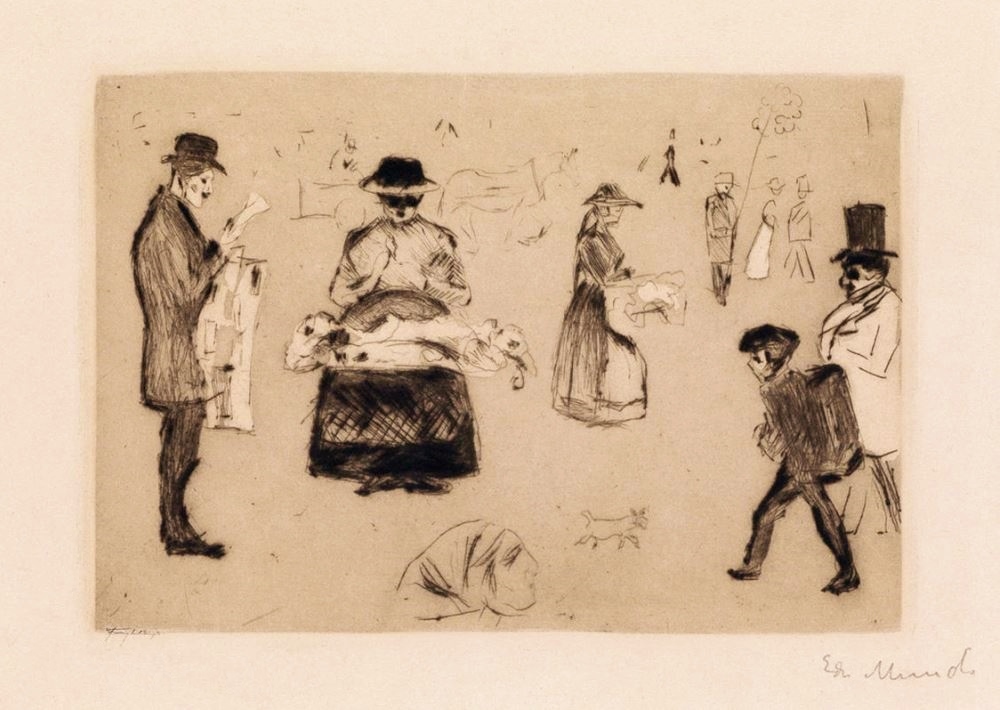Dry point and etching on brown cream wove paper by Edvard Munch – Titled: Potsdamer Platz, 1902
Original limited edition fine art print by Edvard Munch – Titled: Potsdamer Platz, 1902
Dry-point and etching on thick brown cream wove paper signed in pencil by the artist on lower right also signed on lower left by the printer in ink.
Printer: Otto Felsing, Berlin
Dimensions: Paper: 29.5 x 39.9 cm – 11.6 x 15.7 in. – Image (Plate): 12 x 17 cm – 4.7 x 6.7 in
References: Schiefler, 155 and Woll, 177.
Artwork is not available anymore! Thank you.
For more information on artists or other artworks please contact the gallery
Clic here to see more fine art prints>>
Clic here to see more Intaglio printings >>
Edvard MUNCH (1863 – 1944)
Edvard Munch was born December 12, 1863 in Ådalsbruk, Norway and died January 23, 1944 in Oslo. He is a Norwegian expressionist painter and printmaker.
Edvard Munch can, a posteriori, be considered after the Berlin exhibition of 1892, as the pioneer of expressionism in modern painting. From a very early age, he was renowned for his belonging to a new artistic era in Germany and central Europe. His work and his importance are recognized today in Europe and in the world.
His favorite techniques are mainly painting and tempera on cardboard. He is also a pioneer of art accessible to all, an art revealed, shown and not hidden, in the streets and public spaces, in the various places of nature.
Before Munch’s famous breakdown of 1909, he threw himself into printmaking with a fervor shown by very few of history’s great artists; not only as a master printmaker in the tradition of Rembrandt, Goya, and Cassatt, but as an innovator of striking originality whose influence on subsequent printmakers still resonates, primarily but not exclusively in woodcut.
Munch showed little interest in producing editions, except in the case of formally produced portfolios by publishers.
He was more drawn to the possibilities inherent in the experimental nature of printmaking: the infinite variety of inking, assembly and papers. It is important to note that, in woodcut, he rarely made the same print twice.
Sources: Wikipedia – and several others #biography
Date:
September 8, 2022
See more artworks and bio of
AA-Graphic arts